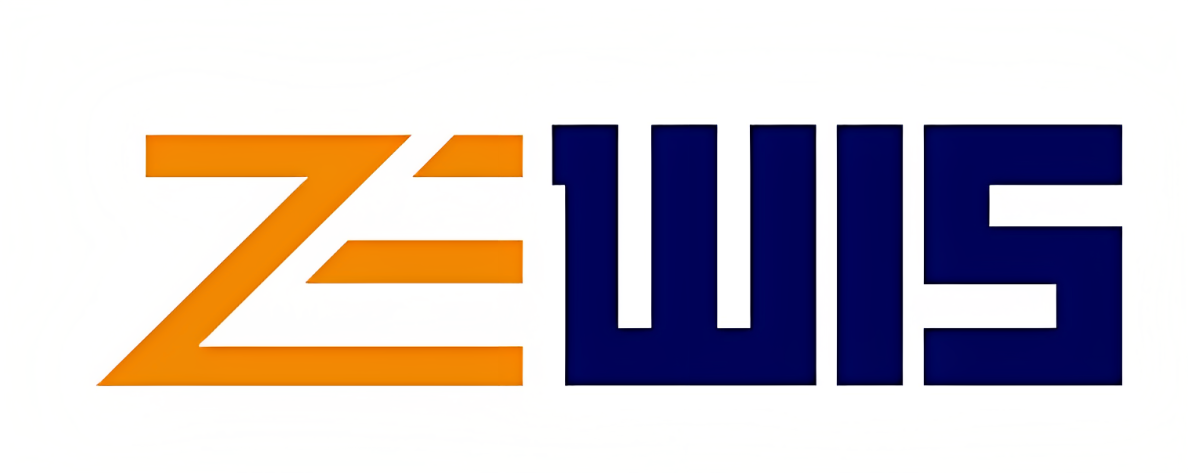Table of Contents
The New Strategic Imperative: Why Outsourcing Your Marketing is No Longer Optional
In the dynamic and fiercely competitive business environment of 2025, marketing has become more complex and resource-intensive than ever before. Business leaders are grappling with a significant paradox: the critical need to master a rapidly expanding universe of channels from search engine optimization (SEO) and pay-per-click (PPC) advertising to connected TV (CTV) and social commerce while simultaneously harnessing advanced technologies like artificial intelligence (AI) and automation. All of this must be achieved under the constant pressure to control costs and maintain an unwavering focus on core business operations. This challenge has fundamentally reshaped the role of marketing outsourcing.
What was once viewed primarily as a cost-cutting tactic has evolved into a strategic growth imperative. The conversation has shifted from “How can we save money?” to “How can we acquire the specialized talent and advanced capabilities needed to win?” Data from Deloitte’s 2024 global outsourcing survey confirms this transformation. While cost optimization remains a factor (cited by 34% of businesses), the primary drivers for outsourcing are now improving access to talent (42%) and meeting increasingly sophisticated customer demands (35%). This marks a definitive move away from simple labor arbitrage and toward acquiring strategic value.
This article provides a comprehensive, data-driven analysis of the 10 proven benefits of outsourcing your marketing. It serves as a definitive guide for business leaders, founders, and marketing managers, offering the insights necessary to make an informed, strategic decision that can unlock new levels of growth, efficiency, and competitive advantage.
Benefit 1: Drastically Reduce Costs and Reallocate Capital for Growth
The most immediate and tangible advantage of outsourcing marketing is the profound impact on a company’s financial health. By partnering with an external agency, a business can transform the high, fixed, and often unpredictable costs associated with an in-house marketing team into a predictable and flexible variable expense. This strategic shift does more than just trim the budget; it liberates significant capital that can be reallocated to core growth drivers like product development, sales team expansion, or market penetration.
Deconstructing In-House Costs
The true cost of building and maintaining an internal marketing team extends far beyond base salaries and is frequently underestimated. A comprehensive accounting reveals a multi-layered financial commitment:
- Salaries and Recruitment: The foundation of in-house cost is personnel. A single marketing manager in the U.S. commands an average salary of around $85,000 per year, and this figure does not account for the additional specialists required for a fully functional team, such as SEO, PPC, and content experts.Furthermore, the recruitment process itself is a significant expense. The average cost to hire just one new employee is approximately $4,700, and the search can delay marketing initiatives by months.
- Overhead and Benefits: On top of salaries, businesses must budget for substantial overhead costs, which typically add another 20-30%. These include health insurance, retirement contributions, payroll taxes, paid time off, office space, and equipment.
- Technology and Training: The marketing landscape evolves at a blistering pace. To remain competitive, in-house teams require continuous training and access to a suite of expensive marketing technology (MarTech) tools, representing a significant and recurring investment.
- The Hidden Cost of Turnover: Employee turnover is a major hidden cost. When a key marketing employee departs, it not only disrupts campaign momentum and requires a new round of recruitment spending but also results in a loss of valuable institutional knowledge.
The Streamlined Agency Cost Model
In stark contrast, outsourcing offers a more financially efficient model. Businesses pay a predictable monthly retainer or a fixed project fee, gaining access to an entire team of specialists for a cost that is often less than the fully-loaded salary of one or two senior in-house employees. This efficiency is well-documented; studies suggest that outsourcing marketing can be
nearly 50% more cost-efficient than maintaining an equivalent in-house team. Some analyses indicate that a brand would need to pay, on average,
60% more to staff the same resources internally compared to engaging an external agency.
The real power of this financial model lies in its strategic flexibility. An in-house team represents a fixed, long-term liability on the balance sheet, a cost that must be borne regardless of seasonal fluctuations or campaign performance. Outsourcing converts this liability into a variable operational expense that can be precisely scaled to match business objectives and revenue cycles. This agility empowers leadership to view marketing not as a static cost center but as a dynamic investment dial.
It can be turned up to capitalize on a product launch or a new market opportunity, or dialed down to navigate economic headwinds, all without the painful and costly process of hiring and firing. Consequently, the capital that would have been locked into salaries and benefits is freed for strategic allocation to other high-growth functions where the business excels, such as research and development or technology infrastructure. This elevates outsourcing from a simple budget-trimming exercise to a sophisticated tool for strategic capital management.

| Cost Item | Average Annual In-House Cost (Illustrative Team) | Equivalent Outsourced Agency Cost (Annualized) |
|---|---|---|
| Marketing Manager Salary | $85,000 | |
| SEO Specialist Salary | $70,000 | |
| PPC Specialist Salary | $65,000 | |
| Content Writer Salary | $60,000 | |
| Benefits & Overhead (~25%) | $70,000 | |
| MarTech Tool Subscriptions | $15,000 | Included in Retainer |
| Recruitment & Training (Annualized) | $10,000 | $0 |
| Total Annual Cost | $375,000 | $42,000 – $120,000 |
| Note: In-house salaries are estimates. Agency costs are based on average monthly retainers of $3,500 – $10,000. |
Benefit 2: Instantly Access a Full Team of Specialized Experts
Effective marketing in 2025 is a complex, multi-disciplinary endeavor that no single individual can master. A successful strategy requires a symphony of specialized skills working in concert, from high-level strategic planning to granular technical execution. Outsourcing provides the most efficient solution to this challenge by granting a business immediate access to a complete, pre-vetted, and cohesive marketing department.
The Specialist Roster You Acquire
When a company partners with a marketing agency, it isn’t just hiring a service; it’s onboarding an entire team of specialists overnight. This roster typically includes :
- Content Strategist: The architect who defines the purpose, audience, and goals of your content marketing efforts.
- SEO Specialist: The technical expert focused on improving your website’s visibility in search engines through on-page optimization, technical audits, and link-building.
- PPC Specialist: The campaign manager dedicated to maximizing return on investment from paid advertising on platforms like Google Ads and Meta.
- Copywriter and Content Creator: The storyteller who crafts compelling blog posts, website copy, email newsletters, and video scripts.
- Graphic and Video Designer: The visual artist who creates engaging images, infographics, and video content that captures attention.
- Social Media Manager: The community builder who executes the day-to-day social media strategy, engaging with followers and growing your online presence.
- Marketing Analyst: The data scientist who tracks key metrics, measures campaign performance, and translates raw data into actionable insights.
- Web Designer/Developer: The user experience expert who ensures your website is not only visually appealing but also optimized for conversions and ease of use.
The Problem with In-House Generalists
In contrast, many small and medium-sized businesses (SMBs) attempt to cover these diverse functions with a small in-house team of one or two “marketing generalists.” While dedicated, these individuals are inevitably spread too thin, leading to significant skill gaps and suboptimal performance in critical, specialized areas. This reality is reflected in a 2024 HubSpot report, which found that
64% of companies believe agencies offer superior access to specialized expertise compared to their in-house counterparts. An agency team not only brings individual expertise but also operates with established workflows and integrated communication, enabling them to execute complex, multi-channel campaigns with a level of cohesion that is nearly impossible for a small internal team or a collection of disconnected freelancers to replicate.
This dynamic transforms the traditional, sluggish process of talent acquisition into a fluid, on-demand model. The conventional approach to filling a skill gap involves a months-long cycle of creating a job description, recruiting, interviewing, hiring, and onboarding. In the fast-paced world of digital marketing, the trend or technology that prompted the hire may have already evolved by the time the new employee is fully integrated. Outsourcing completely bypasses this protracted cycle.
A business can identify a need—for instance, “We need to master advertising on a new social platform”—and instantly engage an agency that already possesses a proven expert and a ready-to-deploy strategy. This allows the business to operate proactively, seizing market opportunities rather than constantly reacting and playing catch-up. It is not merely about having access to experts; it is about having access to them at the speed of business, which provides a significant and often underestimated competitive edge.
Benefit 3: Leverage an Enterprise-Grade Technology Stack—Without the Price Tag
Modern marketing is inextricably linked to technology. To compete effectively in 2025, businesses must leverage a sophisticated and often expensive suite of MarTech tools for analytics, SEO, content optimization, marketing automation, and project management. For many SMBs, the cost of licensing this enterprise-grade technology is prohibitive, creating a significant competitive disadvantage against larger, better-resourced companies.
The Prohibitive Cost of a Modern MarTech Stack
A comprehensive in-house MarTech stack requires substantial and ongoing financial investment. The costs for just a few essential platforms can quickly accumulate:
- SEO & Competitor Analysis: Tools like Semrush or Ahrefs, which are essential for keyword research, competitor analysis, and rank tracking, can cost anywhere from $139.95 to $499.95 per month.
- Content & Influencer Research: Platforms such as BuzzSumo, which help identify trending topics and key influencers, carry a monthly price tag of $199 to $999.
- Content Optimization: AI-powered writing assistants like Clearscope, which ensure content is optimized for search engines, cost between $189 and $399 per month.
- Marketing Automation & CRM: Full-featured platforms like HubSpot or Marketo, which are necessary for lead nurturing and managing customer relationships at scale, can easily run into thousands of dollars per month depending on the size of the contact database and the features required.
- Project Management: Collaborative tools like Asana, essential for keeping a marketing team organized, have per-user costs that add up quickly for a growing team.
The Agency Advantage: Democratizing Technology
Outsourcing elegantly solves this problem. Marketing agencies invest heavily in these best-in-class tools and distribute the cost across their entire client portfolio. As a result, each client gains the full benefit of an enterprise-grade technology stack for a fraction of what it would cost to license it themselves.This is more than just a cost-saving measure; it is a fundamental capability enhancement that democratizes access to the tools of modern marketing.
Gaining access to this technology is not merely about improving efficiency; it is about unlocking the ability to execute sophisticated, data-driven strategies that are otherwise impossible. A business operating without an advanced SEO tool is essentially navigating blind, unable to conduct in-depth competitor research or track the performance of strategic keywords. Without a robust marketing automation platform, implementing complex lead-nurturing funnels, personalized email sequences, or behavior-based lead scoring remains out of reach.
And without advanced analytics, critical decisions about budget allocation and strategy are based on intuition rather than empirical data, inevitably leading to wasted ad spend and missed opportunities. Therefore, when an outsourced partner provides access to their tech stack, they are not just offering tools; they are providing the foundational prerequisite for executing competitive, modern marketing. This elevates the benefit from a simple line-item saving to a core enabler of business growth.

| Tool Category | Example Tools | Typical Monthly Cost (for a single business) | Key Function/Benefit |
|---|---|---|---|
| SEO & Analytics | Semrush, Ahrefs, Google Analytics | $150 – $500+ | Uncovers competitor strategies, tracks keyword rankings, analyzes website traffic. |
| Content Marketing | BuzzSumo, Clearscope, MarketMuse | $200 – $1,000+ | Identifies trending topics, optimizes content for search, analyzes content gaps. |
| Social Media Mgmt. | Hootsuite, Buffer, Sprout Social | $100 – $500+ | Schedules posts, analyzes engagement, monitors brand mentions. |
| Email & Automation | Klaviyo, Mailchimp, HubSpot | $100 – $2,000+ | Creates email campaigns, automates lead nurturing, segments audiences. |
| Project Management | Asana, Trello, Monday.com | $50 – $200+ | Organizes tasks, tracks progress, facilitates collaboration. |
| Note: Costs are based on data from sources. |
Benefit 4: Gain a Fresh, Objective Perspective to Break Strategic Ruts
Even the most talented and dedicated in-house marketing teams are susceptible to a common pitfall: strategic stagnation. Over time, internal teams can become insular, too close to their own products and ingrained in “the way things have always been done.” This “in-house blindness” can stifle creativity, prevent innovation, and lead to the endless recycling of tired ideas, making it difficult to stand out in a competitive market.
The Outsider’s Unbiased Advantage
Outsourcing your marketing introduces a powerful antidote: a fresh, objective perspective. An external partner is not bound by a company’s internal politics, historical baggage, or preconceived notions. This allows them to:
- Challenge Assumptions: They can ask the fundamental, sometimes uncomfortable, questions that internal staff may be hesitant to voice, leading to critical breakthroughs in strategy and messaging.
- Provide Unbiased Analysis: Their assessment of campaign performance and market position is driven by data, not by a desire to defend past decisions or protect internal relationships.
- Inject Cross-Industry Innovation: Perhaps most valuable is the cross-pollination of ideas. Agencies work with a diverse portfolio of clients across numerous industries.31 This unique vantage point allows them to identify successful tactics and innovative strategies from one sector and creatively apply them to another. This ability to import proven concepts from outside your industry’s echo chamber can be a powerful source of differentiation. As a report from Adobe suggests, businesses that actively prioritize and foster creative innovation are 50% more likely to achieve market leadership in their category.
This infusion of external perspective can serve as a powerful catalyst for broader organizational change. When an agency introduces a novel and successful strategy—for example, a data-driven content marketing program that generates demonstrable leads—it provides a tangible proof-of-concept for a new way of thinking. The rigorous reporting and KPI tracking that accompanies such initiatives (as detailed in Benefit 8) compels the entire organization to become more data-literate and results-oriented, shifting the basis of decision-making from subjective opinion to objective evidence.
The success of these externally-driven campaigns can challenge the status quo and inspire other departments, such as sales and product development, to adopt similarly agile and experimental mindsets. Over time, the partnership does more than just enhance marketing performance; it can subtly reshape the company’s operational culture, fostering an environment that is more open to change, innovation, and data-driven accountability. The “fresh perspective” evolves from a one-time injection of ideas into an embedded, ongoing force for improvement.
Benefit 5: Achieve Unmatched Scalability and Business Agility
Businesses are dynamic entities, not static organizations. They experience seasonal peaks and troughs, launch new products, expand into new markets, and navigate unpredictable economic shifts. A rigid in-house marketing team, with its fixed headcount and long-term employment contracts, is often ill-equipped to adapt to these fluctuations efficiently. Outsourcing your marketing provides a solution by offering unparalleled scalability and business agility.
The Elasticity of an Outsourced Partnership
An outsourced marketing model is inherently flexible, allowing a business to precisely tailor its marketing resources to its current needs. This elasticity enables a company to:
- Scale Up On Demand: For a major product launch, a seasonal sales push, or an expansion into a new geographic market, a business can instantly ramp up its marketing activities. An agency can allocate more resources, launch new campaigns, and increase ad spend without the months-long delay associated with recruiting, hiring, and training new full-time employees.
- Scale Down with Ease: Conversely, during a slow season or an economic downturn, a business can scale back its marketing services to conserve cash flow. This is a simple contractual adjustment, avoiding the difficult, costly, and morale-damaging process of laying off internal staff.
This ability to dynamically adjust marketing efforts is not just a matter of convenience; it is a profound strategic advantage. It allows a business to be more responsive, opportunistic, and resilient. According to research from Gartner, 65% of marketing leaders cite the ability to scale operations as a primary driver for choosing to outsource. In essence, it ensures that a company pays for exactly what it needs, precisely when it needs it, eliminating waste and maximizing the efficiency of its marketing budget.
This operational flexibility also functions as a powerful tool for strategic risk management. Committing to a large in-house team during a period of rapid growth creates significant fixed overhead. If market conditions suddenly change or growth projections are not met, this overhead can quickly become a dangerous financial liability, potentially forcing the company into painful layoffs that damage culture and deplete institutional knowledge. Outsourcing effectively de-risks this growth scenario.
By leveraging an agency to handle the increased workload during a boom, the company can pursue aggressive growth without taking on burdensome long-term financial commitments. If the market contracts, the business can simply scale back the agency’s contract—a straightforward commercial decision rather than a difficult human resources crisis. In this way, scalability through outsourcing acts as a crucial buffer against market volatility, allowing a company to chase ambitious opportunities while simultaneously insulating itself from the potential financial fallout.
Benefit 6: Sharpen Your Focus on Core Business Functions
One of the most significant, yet often overlooked, costs of managing marketing in-house is the cost of distraction. When founders, CEOs, product managers, and other key leaders are pulled away from their primary responsibilities to manage marketing tasks, the business pays a steep opportunity cost. Their time, energy, and expertise are diverted from the core activities that define the company’s unique value proposition and drive its long-term success.
Delegating for Strategic Focus
Outsourcing allows a business to strategically delegate the complex and time-consuming tactical execution of marketing to a team of dedicated specialists. This act of delegation liberates invaluable time and mental bandwidth for the internal team, enabling them to concentrate on what they do best:
- Product and Service Innovation: Refining existing offerings and developing new ones to meet evolving customer needs.
- Strategic Business Development: Forging key partnerships, exploring new markets, and shaping the long-term vision of the company.
- Sales and Revenue Generation: Focusing on closing deals and building relationships with high-value clients.
- Enhancing Customer Experience: Ensuring that every customer interaction is positive, leading to higher retention and loyalty.
This strategic reallocation of internal resources creates a powerful productivity dividend. When every team member is focused on their area of highest impact, performance and innovation improve across the entire organization, not just within the marketing function. This is a primary driver for outsourcing decisions; Gartner reports that more than
70% of companies that outsource do so with the explicit goal of sharpening their business focus.
This approach allows a company to apply the fundamental economic principle of “highest and best use” to its most valuable asset: its human capital. Every employee, particularly a founder or senior executive, possesses a finite amount of time and a unique set of high-value skills. When a CEO is wrestling with Google Ads keyword strategy or a lead engineer is struggling to write a blog post, they are not operating at their highest and best use. The immense value they could be creating closing a major partnership, designing a breakthrough product feature is lost.
Outsourcing assigns the marketing function to dedicated specialists for whom marketing is their highest and best use. This, in turn, empowers every internal team member to refocus on their own highest and best use. The result is a system-wide optimization where every component of the business operates at peak efficiency and value-creation, leading to a compounding effect on growth and profitability.
Benefit 7: Accelerate Your Time-to-Market and Outpace Competitors
In the hyper-competitive markets of 2025, speed is not just an advantage; it is a prerequisite for survival. The ability to launch campaigns rapidly, respond to emerging trends, and enter new markets before the competition can be the deciding factor between market leadership and obsolescence. Outsourcing provides a distinct speed advantage by leveraging the efficiency of a dedicated, go-to-market machine.
The Agency Execution Engine
Marketing agencies are purpose-built for rapid and effective execution. They achieve this velocity through several key structural advantages:
- Pre-Established Workflows and Processes: Agencies operate with proven, battle-tested processes and templates for everything from campaign planning and content creation to analytics reporting. This eliminates the need for an in-house team to develop these systems from scratch, dramatically reducing ramp-up time.
- Experienced, Ready-to-Deploy Teams: Agency specialists are veterans in their respective fields. They can hit the ground running on day one, bypassing the lengthy learning curve that new in-house hires inevitably face.
- Immediate Capacity and Resources: An agency has the immediate capacity to begin work on a new project. This stands in stark contrast to the months it can take to recruit, hire, onboard, and train an internal team to the point where it can execute effectively.
The results of this accelerated execution are tangible and significant. A recent Avasant report on enterprise marketing operations revealed that when execution is outsourced to the right partners, campaign deployment time improves by 20–30%, and content production cycles are reduced by as much as 30%. This acceleration allows businesses to seize market opportunities and gain first-mover advantages while their slower competitors are still in the planning stages.
This faster time-to-market creates more than just a one-time benefit; it initiates a powerful, compounding cycle of learning and optimization that progressively widens the competitive gap. A company that can launch a marketing campaign in two weeks instead of two months receives critical market feedback what messaging resonates, which channels perform best, which audiences convert far more quickly. This data is then immediately fed back into the next campaign iteration.
Because their development cycles are shorter, they can run significantly more experiments and optimization loops within a given year than a slower-moving competitor. Over time, this means they are not just faster; they become demonstrably smarter. Their marketing efforts become progressively more effective, efficient, and targeted, while the competition is still analyzing the results of their first attempt. In this sense, speed is the engine of a powerful learning loop that generates compounding strategic returns.
Benefit 8: Implement Data-Driven Strategies and Enhance Accountability
In an era of tight budgets and high expectations, marketing can no longer afford to be a “black box” of unquantifiable activity. Many in-house teams, often lacking advanced analytical tools or specialized data expertise, are forced to make strategic decisions based on intuition or historical precedent. This “gut feel” approach inevitably leads to inconsistent campaign performance, wasted resources, and an inability to definitively justify marketing expenditures to the C-suite.
The Agency’s Data-Driven Mandate
Outsourcing introduces a culture of rigorous data analysis, performance tracking, and unwavering accountability. Professional marketing agencies live and die by their ability to deliver measurable results, and their entire operational model is built around this principle.
- Objective Assessment and Reporting: An external partner provides an impartial, data-backed assessment of what is working and what is not, free from internal biases. They deliver clear, regular reports that translate marketing activities into tangible business outcomes.
- Establishment of Clear KPIs: From the outset of the partnership, an agency will work with the client to establish clear Key Performance Indicators (KPIs). This ensures that both parties are aligned on the specific, measurable goals that define success for every campaign.
- Demonstrable ROI and Accountability: This focus on data provides a transparent and accountable framework. Marketing spend is no longer an ambiguous cost center but a measurable investment with a clear return. This data-driven approach is proven to be effective; research shows that companies with strong, data-driven marketing strategies achieve 20% more revenue growth annually compared to their counterparts.
The clear, data-backed reporting provided by an outsourced agency serves as a powerful communication tool that bridges the gap between the marketing department and the C-suite. CEOs and CFOs operate in the language of numbers: Return on Investment (ROI), Customer Acquisition Cost (CAC), Lifetime Value (LTV), and revenue growth. While in-house marketing teams sometimes struggle to translate their efforts—like “brand awareness” or “social media engagement”—into these concrete financial terms, a professional agency excels at it. Their survival depends on proving their financial value. When a CMO can present a report that clearly shows a
200% ROI on a PPC campaign or a
43% improvement in lead generation results , it builds immense credibility and trust with executive leadership. This data-driven accountability makes it far easier for the C-suite to approve future marketing budgets, as they see marketing not as an expense to be minimized, but as a predictable and scalable engine for growth.
| Company/Industry | The Challenge | The Outsourced Solution | The Measurable ROI |
| Retail Company | Stagnant organic traffic and low search engine visibility. | Comprehensive SEO audit, keyword research, and targeted content creation. | 70% increase in organic traffic; 35% rise in organic conversion rates over six months. |
| Exercise Brand | Needed high visibility for a new product launch on a limited budget. | Targeted PPC campaigns on Google and social media with high-intent keywords. | 200% return on investment on ad spend; 50% increase in sales during the promotion. |
| B2B Manufacturing | Cripplingly low website traffic and an outdated online presence. | Inbound marketing strategy with regular blogging, premium content, and website UX optimization. | Grew website traffic from a handful of views to 12,000-15,000 per month; achieved a 39% increase in sales within the first year. |
| E-commerce Site | High website bounce rates and low customer retention due to poor user experience. | Full website redesign focused on mobile optimization and personalized content recommendations. | 40% decrease in bounce rates; 25% increase in revenue from returning customers. |
Benefit 9: Mitigate Risk and Build a More Resilient Marketing Operation
For many businesses, particularly SMBs, the entire marketing function rests on the shoulders of one or two key individuals. This structure, while common, creates a fragile and high-risk operational environment. Outsourcing provides a robust solution by building a more resilient, diversified, and stable marketing operation.
The Fragility of the Small In-House Team
Relying on a small internal team introduces several significant risks:
- Key Person Dependency: This is the most critical vulnerability. If the company’s sole “SEO guru” or “social media expert” resigns, the entire strategy for that channel can collapse overnight, leaving a knowledge and execution vacuum that is difficult and time-consuming to fill.
- Lack of Redundancy: There is no operational backup. When a key marketer is on vacation, on sick leave, or pulled into another urgent project, critical marketing tasks are often delayed or neglected entirely.
- Performance Volatility and Inflexibility: If an in-house channel is consistently underperforming, pivoting away from it is a slow and painful process. It may require a difficult restructuring of roles or even letting an employee go—a decision with significant human and financial costs.
The Inherent Resilience of the Agency Model

Outsourcing your marketing effectively mitigates these risks by design:
- Team-Based Knowledge: With an agency, knowledge is not siloed in a single individual. A team of specialists collaborates on your account, ensuring that the departure of one agency employee does not disrupt the service or compromise the strategy. There is always someone else who understands your business and can maintain momentum.
- Built-in Continuity: Agencies are structured to provide continuous, uninterrupted service as part of their core value proposition. This guarantees that campaigns are managed and optimized consistently, regardless of individual employee schedules.
- Risk Diversification and Agility: An agency manages a portfolio of marketing channels. If one channel (e.g., a specific social media platform) begins to underperform or becomes less effective due to algorithm changes, the agency can quickly and seamlessly reallocate resources and budget to more promising channels, mitigating potential losses and optimizing the overall marketing mix.
This framework effectively transforms outsourcing into a form of strategic business insurance. Companies routinely purchase insurance to protect themselves against predictable, high-impact risks like fire, theft, or liability. In the modern business landscape, talent attrition and rapid market shifts are equally predictable and can be just as disruptive to revenue-generating operations.
An in-house marketing team is highly exposed to these risks; the loss of a key employee is akin to a fire that can halt a critical business function. An agency partnership, with its built-in redundancy, diversified expertise, and contractually guaranteed service level agreements (SLAs), acts as an insurance policy against these disruptions. It ensures that the marketing engine will continue to operate effectively and generate leads, even in the face of internal turnover or external market volatility. This reframes the agency fee from a simple service cost into a strategic premium paid for operational stability and critical risk mitigation.
Benefit 10: Stay Ahead of the Curve with Future-Ready Expertise
The marketing landscape is in a state of perpetual evolution, driven by the relentless advancement of technology, shifting consumer behaviors, and a constantly changing regulatory environment. For an in-house team, simply keeping up with the latest trends in AI, privacy-first advertising, and emerging platforms like Connected TV (CTV) or voice search is a monumental challenge. For a marketing agency, however, staying on the cutting edge is not just a goal; it is a fundamental condition of survival.
The Agency’s Mandate to Innovate
Agencies are on the front lines of marketing innovation. Their business model compels them to constantly test, learn, and adopt new technologies and strategies to deliver a competitive advantage for their clients. By outsourcing, a business gains an expert partner that is already mastering the next wave of marketing, including:
- Advanced AI Integration: Moving beyond simple generative AI for content creation to leveraging more sophisticated AI for predictive analytics, hyper-personalization at scale, and automated campaign optimization. Experts predict that in 2025, marketers will aggressively adopt these advanced AI capabilities to drive revenue growth.
- Privacy-First Advertising: Navigating the complex, post-cookie digital world with expertise in new identity solutions like Unified ID 2.0 and a focus on building robust first-party data strategies.
- Emerging Content Formats: Mastering the creation of raw, unfiltered video content for platforms like TikTok and developing robust YouTube strategies, which experts predict will become a dominant force in B2B marketing.
- Agentic AI and Automation: Preparing for the rise of “agentic AI,” where autonomous AI assistants can be tasked with complex marketing objectives and execute them with minimal supervision, streamlining efficiency and automating entire content supply chains.
Partnering with a forward-thinking agency is therefore analogous to outsourcing your company’s marketing research and development (R&D) department. In a traditional business, the R&D team experiments with new technologies to create future products—an expensive and high-risk endeavor where many experiments are expected to fail. A modern marketing agency performs a similar function in the marketing domain. They experiment with new AI tools, test emerging ad platforms, and pilot novel content strategies across their client portfolio.
They absorb the cost of the failed experiments and the time invested in the steep learning curve. They then deliver only the proven, successful innovations and refined best practices to their clients. This allows the client to reap the benefits of cutting-edge marketing without having to fund the entire risky and expensive experimental process themselves. In effect, they are paying for the successful outcomes of the agency’s R&D, which is a tremendously efficient and low-risk way to maintain a competitive edge.
Making the Right Choice: Agency vs. Freelancer vs. In-House
The decision to outsource is not a simple binary choice. The optimal marketing structure depends entirely on a company’s specific stage of growth, budget, long-term goals, and desired level of control. There is no single “best” answer, but rather a best fit for each unique situation. Understanding the distinct pros and cons of the three primary models in-house, freelancer, and agency is crucial for making the right strategic decision.
The In-House Team
- Pros: This model offers the highest degree of control over strategy and brand messaging. The team is deeply integrated into the company culture, fostering seamless collaboration with other departments like sales and product. Over time, this approach builds a valuable foundation of internal knowledge and expertise that remains with the business.
- Cons: It is by far the most expensive and slowest model to build. It carries a high risk of creating skill gaps, as it is difficult to find individuals who are experts in all facets of modern marketing. Furthermore, in-house teams can become insular, leading to a lack of fresh, external perspectives.
- Best For: Larger enterprises with consistent, complex marketing needs and the substantial, stable budget required to recruit and retain a dedicated, multi-specialist team.
The Freelancer Model
- Pros: Hiring freelancers is often the most cost-effective option for executing specific, well-defined tasks. It offers maximum flexibility for short-term projects and provides access to highly specialized niche skills on demand.
- Cons: This model requires significant management and coordination overhead from the business owner or an internal manager. Freelancers typically execute tasks rather than providing high-level strategic input, and managing a team of them can lead to disjointed efforts. Quality, availability, and communication can also be inconsistent.
- Best For: Businesses that need to fill a temporary skill gap for a discrete project (e.g., designing a single landing page or writing a whitepaper) or companies that already have a strong in-house marketing manager capable of orchestrating the work of multiple independent contractors.
The Outsourced Agency
- Pros: This model represents the “sweet spot” for many businesses. It provides immediate access to a full, integrated team of specialists, an enterprise-grade technology stack, and high-level strategic oversight. It is highly scalable, allowing services to be adjusted to meet changing needs, and it is far more cost-effective than building a comparable in-house team.
- Cons: It involves relinquishing some day-to-day control compared to an in-house team. Success is highly dependent on choosing the right partner, and if the relationship is not managed proactively, communication challenges can arise. The cost is higher than that of a single freelancer.
- Best For: The vast majority of small-to-medium-sized enterprises (SMEs) and high-growth companies that require comprehensive, expert-led marketing strategy and execution but lack the time, resources, or desire to build and manage a large internal department.
| Factor | In-House Team | Freelancer(s) | Outsourced Agency |
|---|---|---|---|
| Cost | Highest (salaries, benefits, overhead) | Lowest (for specific tasks) | Moderate (predictable retainer, high value) |
| Speed & Scalability | Slow to build, rigid structure | High flexibility for short-term needs | Fast to deploy, highly scalable up or down |
| Range of Skills | Limited by hires, risk of skill gaps | Niche expertise, but often siloed | Full, integrated team of diverse specialists |
| Strategic Input | High (if senior talent is hired) | Low (typically execution-focused) | High (core part of the service) |
| Management Overhead | High (direct management required) | Very High (coordinating multiple individuals) | Low (agency manages its own team) |
| Brand Integration | Highest (fully embedded in culture) | Lowest (external, project-based) | Moderate to High (with a strong partnership) |
| Note: This comparison is based on data from sources. |
Forging a Successful Partnership: A Blueprint for Mitigating Risk
While the benefits of outsourcing are compelling, it is not a magic bullet. A successful partnership is not automatic; it requires careful planning, diligent selection, and proactive management. By acknowledging the potential risks upfront and implementing a strategic framework to address them, businesses can avoid common pitfalls and forge a productive, long-term relationship with their marketing partner.
A Step-by-Step Mitigation Framework
- Step 1: Define Your Goals and KPIs UpfrontBefore initiating the search for a partner, it is imperative to achieve internal clarity on what success looks like. Vague objectives invariably lead to vague and unsatisfactory results. Goals should be specific, measurable, achievable, relevant, and time-bound (SMART). For example, instead of “increase brand awareness,” a clear goal would be “increase qualified marketing leads from organic search by 30% within the next six months”.
- Step 2: Conduct Rigorous Due Diligence to Choose the Right PartnerThe selection of your agency partner is the single most critical step in the entire process. A great partner can transform your business, while a poor one can waste time and money. Key criteria for evaluation include:
- Proven Results and Case Studies: A reputable agency will be able to provide concrete case studies that showcase real, measurable impact for past clients. Ask for data, not just anecdotes.
- Relevant Industry Experience: Ensure the agency understands the unique nuances of your market, whether you are B2B or B2C, and has experience within your specific industry vertical.
- Cultural Fit and Communication Style: Treat the selection process as if you were hiring a senior executive. Assess their communication practices, transparency, and responsiveness. A strong cultural fit is essential for a smooth and collaborative partnership.
- Step 3: Establish a Rock-Solid Contract and Scope of Work (SOW)The formal agreement is the foundation of the partnership. It should leave no room for ambiguity. The contract and accompanying SOW must clearly define:
- The precise scope of work and a detailed list of deliverables.
- The Key Performance Indicators (KPIs) that will be used to measure success.
- The agreed-upon communication protocols and the frequency of reporting.
- Strict clauses regarding data security, confidentiality, and intellectual property, often including a Non-Disclosure Agreement (NDA).
- Step 4: Manage the Relationship Proactively and CollaborativelyOnce the partnership begins, the work is not over. Ongoing, proactive management is key to ensuring alignment and maximizing value.
- Establish Clear Communication Channels: Utilize shared project management tools like Asana or Slack and schedule regular, structured check-in meetings to review progress and address challenges.
- Provide Timely and Constructive Feedback: Treat the agency as a true extension of your internal team. Providing prompt and clear feedback is crucial for keeping campaigns on track and ensuring the output aligns with your brand voice and strategic goals.
- Trust Their Expertise: While maintaining oversight, it is vital to avoid micromanaging the tactical execution. You hired the agency for their specialized expertise; trust their process and be open to their creative and strategic recommendations.

Conclusion: Outsourcing Your Marketing as a Transformative Growth Strategy
The evidence is clear and compelling: in 2025, outsourcing your marketing is no longer a peripheral cost-saving tactic but a central and powerful strategy for driving sustainable growth. The decision to partner with an external agency transcends the simple offloading of tasks; it is a strategic choice to infuse your organization with specialized expertise, advanced technology, operational agility, and a fresh, innovative perspective that is nearly impossible to replicate in-house at a comparable cost.
From the immediate financial relief of converting high fixed overhead into a flexible, predictable expense, to the long-term competitive advantage gained from accelerated learning cycles and future-ready expertise, the benefits are profound and multifaceted. Outsourcing allows a business to sharpen its focus on its core competencies, entrusting the complex and ever-evolving discipline of marketing to a dedicated team of specialists. It provides the scalability to seize market opportunities with speed and the resilience to navigate economic uncertainty with confidence. The data-driven accountability inherent in a strong agency partnership builds credibility with leadership and transforms marketing from a cost center into a proven, measurable engine for revenue growth.
Ultimately, the choice to outsource is an investment in a more agile, intelligent, and competitive future. By using the frameworks provided in this article to assess your unique needs and conduct diligent partner selection, you can move beyond the constraints of the traditional in-house model. Forging a strategic partnership is the most effective way to build a powerful, modern marketing operation capable of delivering the results your business needs to thrive in the years to come. The future of marketing is collaborative, and for a growing number of businesses, that future begins with outsourcing.









